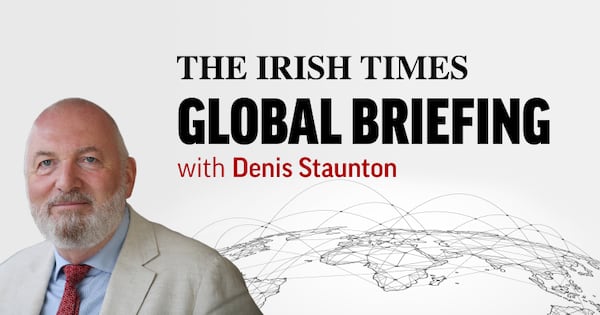The Trump administration stunned much of the diplomatic world last week with a peace plan for Ukraine that was widely seen as a capitulation to most of the Kremlin’s demands.
Over the past few days, US officials responded to the storm of criticism by insisting that their plan was still a work in progress. They said they had revised it to address more of Ukraine’s concerns, while acknowledging that doing so made it less likely that Russia would take the deal.
So is US president Donald Trump’s current push for peace destined to fizzle, as have his prior initiatives for ending the war? Or has it injected new momentum into the global effort to end Europe’s most violent fighting since the second World War?
Here’s a look at the big picture around the Trump administration’s new peace plan.
Where did the latest peace effort originate?
Trump has been pushing to end Ukraine’s war all year. As of last month – despite eight phone calls between Trump and Russian president Vladimir Putin, five meetings between White House envoy Steve Witkoff and the Russian leader, and an in-person summit in Alaska – none of the administration’s efforts have come to fruition.
But after the Gaza Strip peace talks produced an agreement in early October, the White House mounted one more effort.
Jared Kushner, Trump’s son-in-law, who was closely involved in the Gaza negotiations, joined Witkoff in proposing to the president that they try to build on their Middle East success by drafting a Russia-Ukraine peace deal, a White House official said.
Trump gave them the green light.
What input did Russia and Ukraine have?
Kushner and Witkoff met in late October in Miami with Kirill Dmitriev, a Harvard-educated economic envoy for Putin who was now playing an unusual role as a geopolitical negotiator. This month, they met Rustem Umerov, the chief national security adviser to president Volodymyr Zelenskiy of Ukraine, who was closely involved in Ukraine’s negotiations with Russia in the early weeks of the war in 2022.
The separate meetings with Umerov and Dmitriev lasted about six hours each, the White House official said. Kushner and Witkoff then developed the 28-point proposal that became public last week.
[ Ukraine and Europe will probably have to accept version of Trump's peace planOpens in new window ]
While US administration officials insist that Ukraine was involved in preparing the proposal, it would have achieved most of Putin’s goals, and many Ukrainians described it as a plan for the country’s capitulation. Defenders of the administration’s approach said it simply reflected battlefield realities.
How has the plan changed?
US secretary of state Marco Rubio called last week’s plan a “living, breathing document.” And by Monday, it appeared to have changed again, after US and Ukrainian officials emerged from two days of talks in Geneva.
Mr Zelenskiy said those talks had slimmed down the US plan to fewer than 28 points, and that “many of the right elements have been taken into account”.
The White House official said that some of the proposal’s key points had been revised after the Geneva talks, including the earlier plan’s stipulations that would have forced Ukraine to shrink its army, cede territory to Russia and restrict the presence of Nato troops in Ukraine.
What’s next? Is Russia on board?
For the White House, the problem with revising the peace plan to take more of Ukraine’s concerns into account is that it makes Russia less likely to accept it. The administration is well aware that backing off some of the requirements in last week’s peace plan may be a non-starter for the Russians, the White House official said.
It wasn’t even clear that last week’s plan, though it was criticised as a pro-Russian document, would be acceptable to Putin. The proposed cap on Ukraine’s military strength at 600,000 troops, for example, was far higher than the 100,000 that Moscow proposed in 2022 talks.
“Obviously, the Russians get a vote here,” Rubio said in Geneva on Sunday.
The United States is now expected to present the revised plan to Russia. And Zelenskiy said he would discuss its “sensitive issues with president Trump”, though it wasn’t clear when the two would talk.
Last week, Trump set a deadline of Thanksgiving – Thursday of this week – for Ukraine to approve a peace plan. But the White House no longer views Thursday as a firm deadline, said the White House official.
Is Ukraine any closer to peace?
While it appeared over the summer that Trump might lose interest in Ukraine talks after he failed to deliver on his campaign pledge to end the war within 24 hours of taking office, the president has shown a willingness to keep trying.
To many critics, Trump has appeared to be appeasing Russia by floating a plan that would force Ukraine to give up land it controls, recognise Russia’s territorial conquest, lift sanctions and keep Ukraine out of Nato.
But some analysts are more sanguine about Trump’s approach, maintaining that any compromise that ends Russia’s invasion by diplomatic means will involve painful concessions by Ukraine.
“Just a week ago, it looked like diplomacy was essentially dead,” said Samuel Charap, a senior political scientist and Russia specialist at the Rand Corp. “Even if none of the 28 points are adopted, it has already had a catalysing effect on forcing all of the relevant governments on engaging on their view of a settlement.”
– This article originally appeared in The New York Times.











